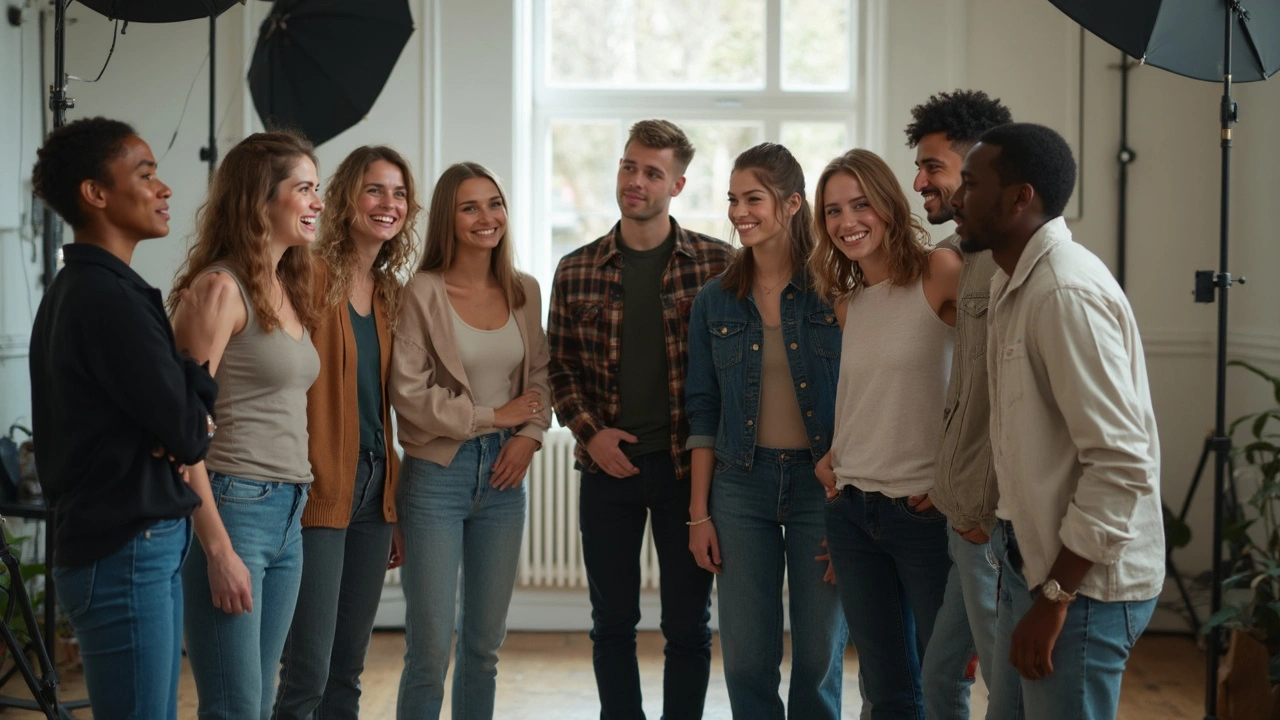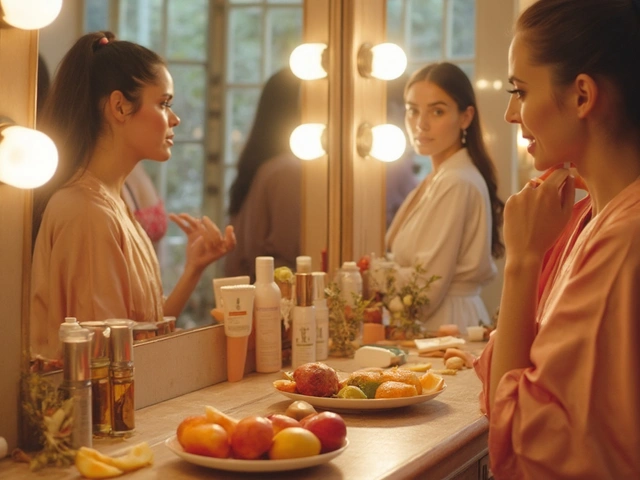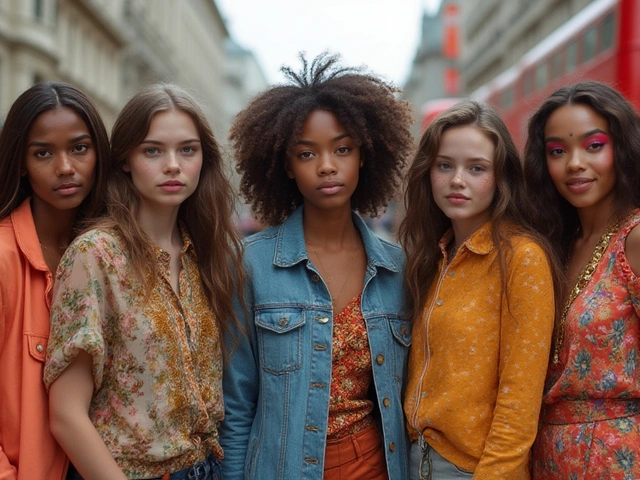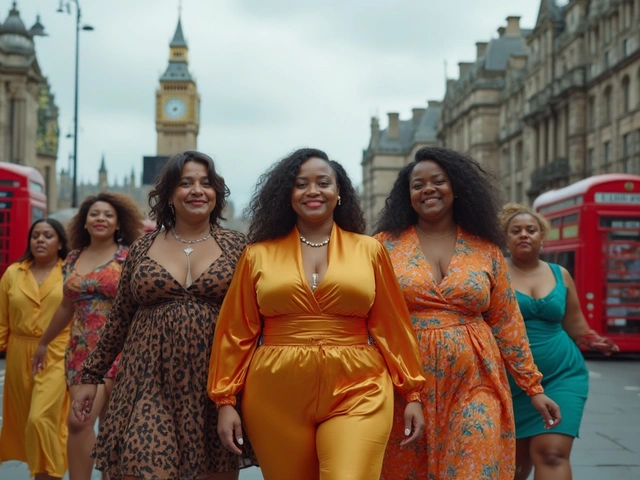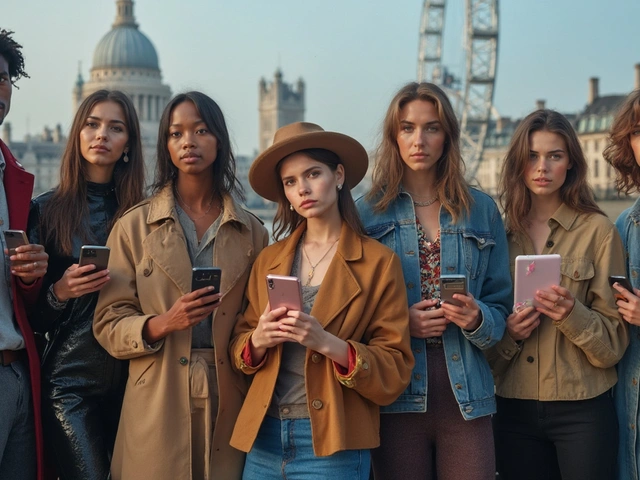There’s this big myth that you need to look a certain way or know the right people to start modeling. Nope. The truth is, beginners can get jobs faster than they think, as long as they know where to look and what to avoid.
Most brands want fresh faces—the ones that look like actual people, not airbrushed robots. Social media opened doors too. You don’t have to fit one mold to get noticed anymore. Local photographers, small brands, even friends selling things on Instagram—they’re all searching for people to showcase real clothes and products. I've seen gigs pop up at coffee shops, local boutiques, and little pop-up events. The catch? Some offers are sketchy, so yes, you do have to be a bit picky.
If you’re itching to try, start with photos you already have (think everyday snaps, nothing too fancy). Don't spend money on a professional shoot just yet. Agencies and brands want to see how you actually look, not how you look with three layers of makeup and Photoshop.
- What Counts as a Model Job Today?
- Do You Need a Portfolio Right Away?
- Spotting Legit Agencies vs. Scams
- First Steps: Auditions and Open Calls
- Tips for Growing Fast as a Beginner
What Counts as a Model Job Today?
The world of modeling jobs is way bigger than just catwalks or glossy magazines. A beginner can get paid to wear a hoodie for a local store’s Instagram or show up in an online ad for kitchenware. The range of model jobs is all over the place now, so you have more options than ever.
Here’s a breakdown of what actually counts as a model job these days:
- Commercial Modeling: Showing up in ads for brands—think billboards, online shops, flyers, or social media.
- Fitness Modeling: Modeling sportswear, gym gear, or being featured in fitness content (most brands want regular-looking people, not just bodybuilders).
- Parts Modeling: Focusing on hands, feet, or other body parts for things like ring ads, shoe stores, or even nail salons.
- Promotional Modeling (Promo Work): Working at events or trade shows, handing out samples or showcasing products.
- Runway and Fashion Shows: These can be local charity events, small designer showcases, or bigger city shows.
- Influencer or Social Media Modeling: Small brands pay beginners to post photos or videos wearing their clothes or using their stuff.
It doesn’t always look glamorous, but it pays (sometimes, pretty well for just a day’s work). Check out some actual pay averages for first-time, entry-level gigs in the US:
| Model Job Type | Typical Pay (Per Gig) |
|---|---|
| Instagram Brand Posts | $50 – $300 |
| Commercial Shoot (Local) | $100 – $500 |
| Promo/Event Modeling | $15 – $50/hour |
| Parts Modeling | $75 – $350 |
Some modeling gigs even let you keep what you’re modeling (clothes, products, makeup). I know people who did it just for the free shoes. The key is, if someone is asking you to help sell, show, or promote stuff with your image, it’s a legit model job—even if you’re not famous or signed yet.
Do You Need a Portfolio Right Away?
I get it. When you think about model jobs, you probably picture those big, glossy portfolios packed with high-end shots. But at the start, you really don’t need all that. In fact, most agencies and brands want to see the real you—how you look on a regular day—before they care about a fancy book.
If you’re just breaking in, a simple set of clear photos does the job. No need for expensive photographers. Grab a friend or use your phone timer by a window. Good, natural lighting beats any filter or backdrop. Shoot three basics: a headshot (straight face, no huge makeup), one full-body shot, and one profile shot. Wear clean, simple clothes. That’s usually plenty for agencies and most beginner gigs.
Some agencies actually prefer these basic snaps to styled shoots. They want to know what they’re working with—no surprises. I know people who landed their first casting with nothing but phone pics in a kitchen. And if someone demands a paid professional shoot up front, that’s a red flag—legit agents make money when you do, not before.
Once you start booking jobs, then you can build a professional portfolio. For now, keep it simple and honest. If you’re posting online to find work, stick to the same idea—clear, recent, no heavy edits. Real is what gets attention when you’re getting started.

Spotting Legit Agencies vs. Scams
This is where a lot of rookie models trip up. Scam agencies are everywhere and can look super professional—slick websites, fake testimonials, even fake office photos. It’s easy to get sucked in, especially if you’re excited about your first model jobs gig.
Real agencies never charge you up front to join. If someone asks you for a "registration fee," "portfolio fee," or says you must pay for training before you can start, walk away. Genuine agencies make money when you make money, by taking a percentage of whatever job you book through them (usually 10-20%).
There’s a big difference between recommending a photographer and requiring you to pay their in-house one. You don’t need a professional portfolio to apply. Honest agencies accept natural daylight snaps—front, side, and a smiling shot, all without heavy makeup.
Check which models an agency represents. Google their names and stalk their real-world gigs: have they appeared in known magazines, retail ads, or fashion shows? Fake agencies often show random Instagram models or even use photos stolen from Google. If you can’t verify any success stories, that’s a red flag.
- Check if the agency is listed on the Better Business Bureau or has reviews on Trustpilot or Google Maps. Lots of complaints about fees or "fake castings"? Move on.
- Never send money to strangers. Period. Not for photos, booking fees, or anything else.
- Legit agencies communicate via company emails (not Gmail or Hotmail) and list their physical office addresses. You should be able to walk in and see a real office.
- Read contracts before you sign anything. Don’t be afraid to ask someone you trust (maybe a parent or someone older) to take a look.
Most brand-new models get caught up in the hype, but trust your gut. If it feels weird or pushy, it probably is. There are good agencies out there—you just have to do a little homework first.
First Steps: Auditions and Open Calls
You don’t need to overthink your first audition or casting call. Most beginner model jobs start with open calls or simple submissions. An open call is when a modeling agency lets anyone interested show up and meet them. No invite needed. You’ll just sign in, maybe fill out a short form, and wait for your turn. Agencies usually give you a quick look: front, side, and maybe walking. They might snap a few basic photos you don’t have to pay for. If you’re applying to something online, all you usually need is a few clear, current pictures and some measurements.
Agencies often post their open call hours right on their websites—no need to guess or email your life story. Big companies like Ford Models and Wilhelmina, for example, host open calls every week in some cities. They clearly say what to bring (usually: clean face, simple clothing, and clean hair). No need for a wild outfit—skinny jeans and a plain tee work. Fancy shoes? Not required. Don’t show up late. They’ll likely see dozens of people in a day.
Here’s a quick table for some real numbers about how long open calls run and what percent of people make it past the first round, just to keep expectations real:
| Agency | Open Call Length | Chances of Callback |
|---|---|---|
| Wilhelmina NY | 2 hours | About 1 in 20 |
| Ford Models LA | 1.5 hours | Roughly 1 in 15 |
| Next Miami | 3 hours | 1 in 30 |
One important tip: avoid any agency asking for money upfront. Real agencies make money by getting you work—not by charging you “signing fees” or making you buy expensive photoshoots. If you run across this, that’s a red flag. Also, don’t be afraid of hearing “no.” Most models hear it a ton before landing their first job.
- Bring your measurements: height, bust/chest, waist, hips, shoe, and hair/eye color
- Arrive earlier than the start time to settle in and calm nerves
- Practice a simple walk and some basic poses in the mirror—confidence stands out more than anything else
It might feel awkward at first, but the more you do, the less intimidating it is. You don’t need a whole backstory. Be polite, be punctual, and let them see your natural self. It's about showing potential—not perfection.

Tips for Growing Fast as a Beginner
The fastest way to grow as a beginner in modeling isn’t just about getting in front of a camera—it's about standing out for the right reasons. Here’s the lowdown on what actually works if you want to move up quick and not just fill your feed with pretty-but-pointless pics.
- Be consistent online. Update your social media and portfolio with recent, clear shots every couple of weeks. Clients actually scroll through Instagram to find models, and agencies admit they check online presence before reaching out.
- Network like a real person. Don’t spam DMs, but introduce yourself to photographers, makeup artists, and stylists at shoots or events. Word-of-mouth gets beginners their next model jobs faster than you’d think.
- Learn your angles. Spend time practicing basic poses at home. Check poses that are trending on model portfolios for some inspiration. It makes shoots way smoother and more fun (for you and the photographer).
- Say yes—but not to everything. Gigs that align with your values and schedule help you grow. The more you shoot, the more comfortable you get, and your skills show up fast in your photos.
- Keep your info up to date. If you change your look (haircut, piercings, anything), update agencies and your profiles right away. Brands get frustrated if you show up looking completely different than you did in your pictures.
It’s not just tips and tricks—here are some quick numbers that matter for beginners who hustle smart:
| Growth Move | How Much Faster It Helps |
|---|---|
| Regularly sharing new photos online | Can double callbacks for castings compared to inactive profiles (per 2024 Models.com report) |
| Networking at local shoots/events | Leads to 30% more booked jobs in first year |
| Learning 5-10 basic poses | Shortens photoshoot time by over 20%, making you a favorite for photographers |
The thing most beginners forget? Reliability. Showing up on time, answering emails fast, and being easy to work with sticks in people's minds way more than being "the most beautiful." Hype fades, but a good reputation? That’ll land you more jobs, every single time.
